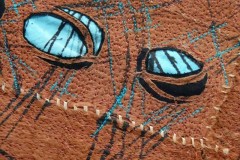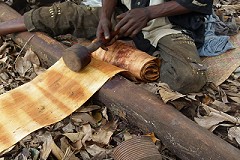A unique cloth
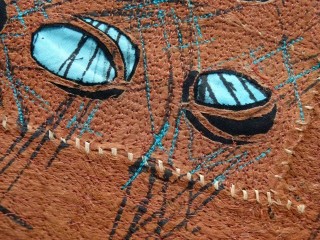 Omweso with Seeds
Omweso with Seeds
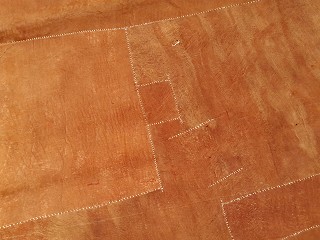 Patched raw cloth
Patched raw cloth
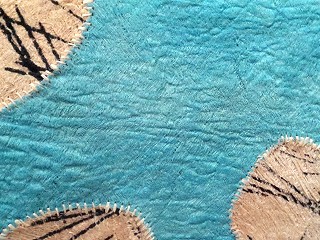 Ekyokubala - finished piece
Ekyokubala - finished piece
Each piece of bark cloth is unique in colour and texture. One main characteristic are the small holes and openings which comes about from the pounding process. These are hand stitched or patched together using a handmade sisal thread, giving each piece of bark cloth its uniqueness. I also love the knowledge that yet another person's hand has been at work. A large piece of cloth can be as much as 2 metres wide by 3 or 4 metres, being the height of the tree.
I have also sourced bark cloth from the region of Lake Victoria where a different variety of Mutuba Tree grows and which produces a cream bark cloth. This cloth takes the dye beautifully so I have been able to dye a good range of colours. The more common terracotta coloured bark cloth will also take the dye producing a rich range of darker browns and reds. A black bark cloth is achieved by burying the cloth in the ground for a matter of several days. A reaction must take place with the soil as the terracotta coloured cloth, when it emerges, turns black.
In 2005, UNESCO named Ugandan bark cloth a masterpiece of oral and intangible heritage of humanity, ensuring its protection for the future. This in turned sparked new conversations about its place in both contemporary Ugandan culture and the global research, design and manufacturing market.
The first two pieces at the top of the page have been heavily patched, and I just love that fact that someone else's hand has worked the cloth. I have been employing this method of hand piecing in my most recent works, along with dyeing and printing the cloth and stitching with natural grass collected from Kisaabwa, Uganda. This detail is from a piece of work entitled Ekyokubala, which means 'counting'.
